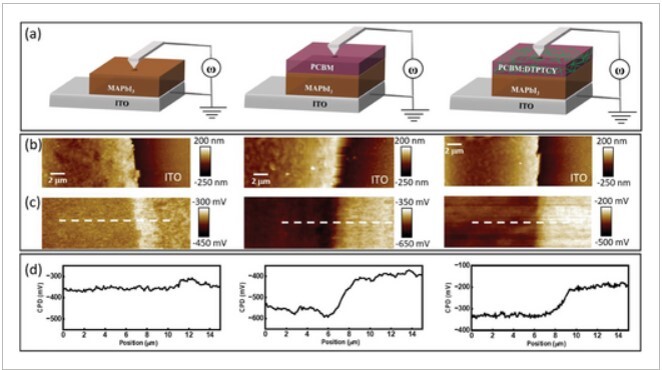Enhancing the Efficiency of Indoor Perovskite Solar Cells through Surface Defect Passivation with Coplanar Heteroacene Cored A–D–A-type Molecules

Adv. Funct. Mater.2024,34, 2312819
The passivation of perovskite interfacial defects by the electron transport layer (ETL) has emerged as an effective strategy for enhancing the performance of perovskite solar cells (PSCs). Dithieno[2,3-d:2′,3′-d′]thieno[3,2-b:3′,2′-b′]dipyrrole (DTPT)-based acceptor-donor-acceptor (A–D–A) molecules composed of coplanar heteroacene as electron-donating core end-capped with various electron-accepting moieties are designed and examined as ETL modifiers for PSCs. Employing PCBM:DTPTCY as the ETL results in passivation perovskite defects, facilitation energy alignment at the ETL/perovskite interface, and enhancement of carrier transport efficiency. The optimized blended ETL-based Cs0.18FA0.82Pb(I0.8Br0.2)3 p-i-n PSC exhibit performances of 37.2% and 39.9% under TL84 and 3000K LED (1000 lux), respectively. The DTPTCY-based device demonstrates remarkable stability, retaining 87% of its initial power conversion efficiency (PCE) after 30 days of storage in a 40% relative humidity (RH) ambient air environment without any encapsulation, surpassing the control device, which retains only 67% of its original PCE. These findings underscore the potential of A–D–A-type molecule-based interface modification to enhance passivation and contact properties, ultimately leading to high-efficiency and stable PSCs.
